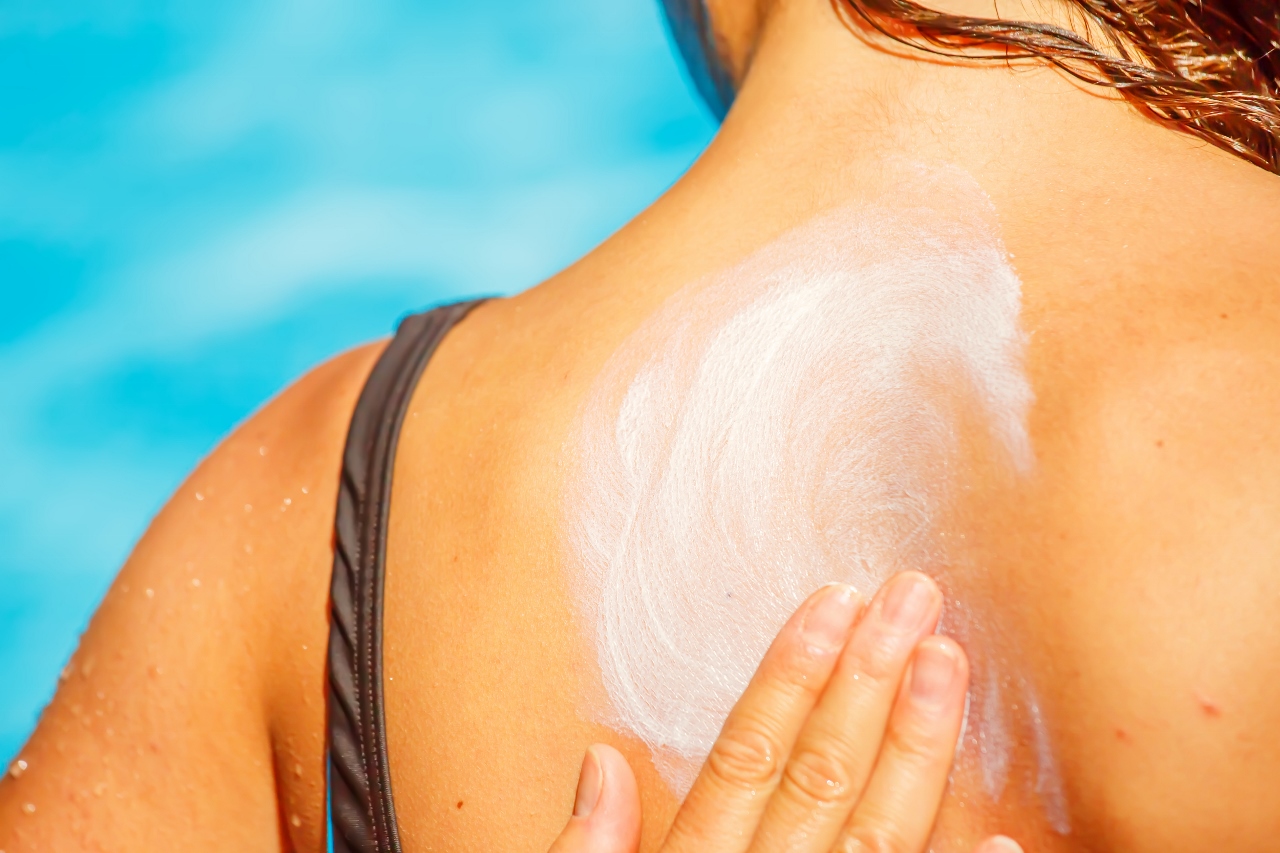The use of sunscreen has become an increasing important regiment for everyone, regardless if they have prolonged exposure to direct sunlight for work or recreation, or intermittent sun. However, unlike many skin care products, sunscreen is unique in that in order to use it correctly, you need to apply it over wide areas of skin, and to re-apply frequently. This means that your body is exposed to much higher levels of the ingredients of sunscreen than to many other skin care products. Just how safe are the chemicals used in sunscreen?
The most common active ingredients in sunscreen come in two forms, chemical or physicial/mineral-based filters. “The purpose of these filters is to protect the skin while also maintaining stability of the sunscreen so that it does not break down and lose effectiveness,” explains Dr. Adam Mamelak, a board-certified dermatologist and skin cancer specialist at Sanova Dermatology. Most modern sunscreens rely on chemical filters, which are a combination of two or more of the following six chemicals: oxybenzone, avobenzone, octisalate, octocrylene, homosalate and octinoxate. Most mineral filters are made up of zinc oxide, titanium oxide, or a combination of the two. In addition, a few sunscreens contain a combination of zinc oxide and various chemical filters.
A few studies have shown that some sunscreens containing chemical filters – most notably oxybenzone – can mimic naturally occurring hormones or cause skin irritation and rashes. Specifically, oxybenzone, an ingredient used in approximately 70% of all chemical filter-based sunscreens, has been shown in limited laboratory studies to cause disruptions in the endocrine system. The endocrine system produces hormones critical to such things as growth and reproduction.
In addition, a number of animal studies have shown links between oxybenzone and other chemical filters and reduced sperm count, delayed puberty, and other developmental disorders.
“The major problem with these studies is that they were performed in a lab under unrealistic conditions,” says Dr. Mamelak. “It would take 277 years of applying sunscreen daily to get the same dose of oxybenzone that was given to these rats!”
Dr. Mamelak further notes that oxybenzone was first approved by the FDA in 1978, making it one of the oldest sunscreen ingredients still in use today. Its safety was reviewed in 1983 and again in 2001, 2002 and 2006 by medical experts. Neither U.S. or European scientists found any conclusive evidence indicating oxybenzone had detrimental effects on hormones or was harmful to humans.
If patients are still concerned, Dr. Mamelak does offer another option. “No studies have found similar problems with physical sunscreens.” Zinc oxide and titanium dioxide are believed to have no ill effects on human health and such sunscreens are readily available.
Contact Us
Using sunscreen is a smart way to protect your skin from the damaging rays of the sun, but you need to make sure you choose your sunscreen wisely. Contact us if you need more information about choosing the right products to protect your skin.

